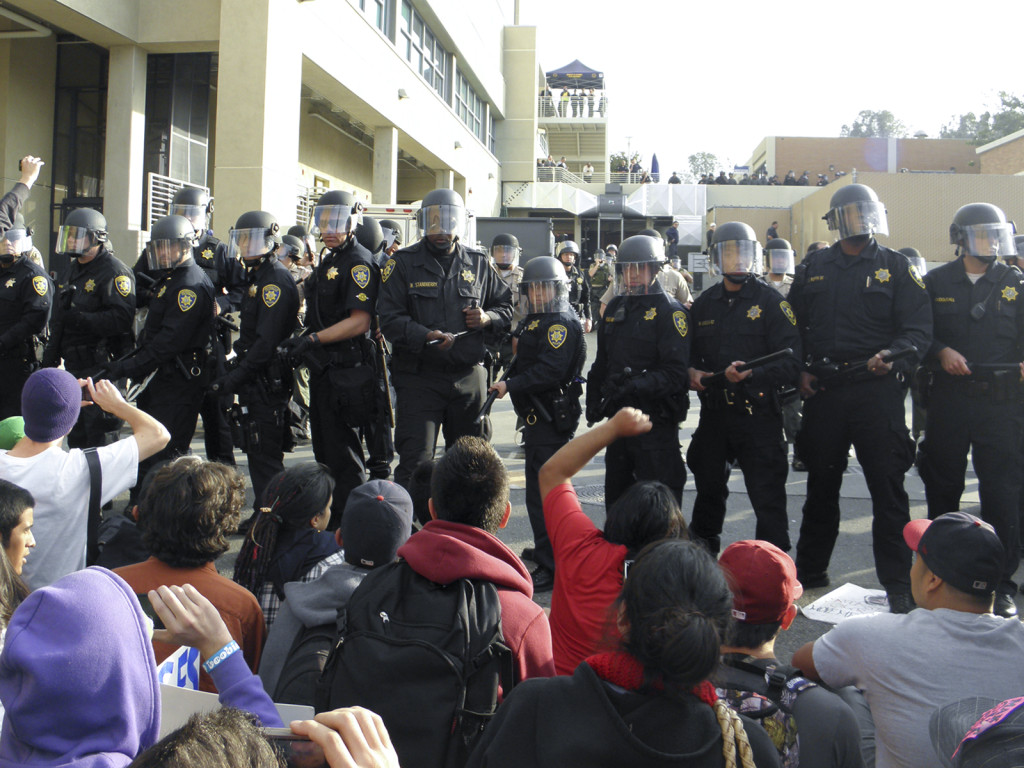
“Congress shall make no law respecting an establishment of religion, or prohibiting the free exercise thereof; or abridging the freedom of speech, or of the press; or the right of the people peaceably to assemble, and to petition the government for a redress of grievances.”
If you’ve passed your AP government exam, you’ll recognize these words as the first amendment to the Constitution. Essentially, it guarantees many of the central rights we’ve all come to know and love: freedom of speech, freedom of assembly, freedom of religion, freedom of the press. They’re as American as a baseball player setting off a burst of red, white and blue fireworks in the shape of a bald eagle. While eating apple pie.
You’ll notice that the right to vote isn’t included.
Don’t get me wrong — voting is the bee’s knees. You get to play connect the arrows and get a free sticker afterward. Oh, and you get to hire the people who make decisions about your everyday life. Not a bad deal.
But you know what also gives bees their knees? Participating in democracy in the other ways guaranteed to us by the first amendment. Let’s take the freedom of speech. In 1852, Harriet Beecher Stowe used her freedom of speech to write “Uncle Tom’s Cabin.” With just one book, Northerners who thought slavery was rainbows and lollipops became aware of the brutal reality, eventually leading to the final end of slavery in the United States. Stowe did that with just her ideals and a pen to write them with.
It’s not just historical. People are exercising their free speech to make change today, especially on college campuses. Emma Sulkowicz is speaking out against rape by carrying her mattress with her everywhere she goes until her rapist is brought to justice. The result has been a flurry of activity in California and across the country to fight against the all-too-common occurrence of rape on college campuses.
Petitions, too, have been effective in forcing the government to make policy changes. Much to the surprise of many cynics, including myself, petitions on the White House website have actually resulted in substantial changes. The Stop Online Piracy Act (SOPA), which would have quashed free speech on the Internet, had priority shipping through Congress. But after a petition gained more than 100,000 signatures, the White House gave it the thumbs-down. The result? SOPA got lost en route, and nobody requested Amazon’s package tracking service.
Closer to home, when the UC San Diego administration controversially shut down a student-run cafe, incensed students delivered over 14,000 signatures and open letters to the chancellor in protest. The case is now in the courts, with supporters pledging to fight on until the cafe is restored.
What about assembly? Students at the University of California have done their fair share of that too. In the middle of the Civil Rights Movement, UC Berkeley instituted a ban on political activity. A defiant student was arrested and put in a police car. Except the car never made it to the police station: A crowd of 3,000 protesters surrounded the car for 36 hours straight, making it as useful as a rock with wheels, forcing his release and changes to the oppressive policy.
Ending slavery, standing up for free speech, supporting local business and resolving rape on college campuses — these didn’t come to pass solely through voting, but through active use of the freedom granted to us by the first amendment. The elections are over, but we have to follow through with our votes by raising our voices and demanding change, whether by protest, petition or pen. Voting isn’t the end of the story — it’s merely the prologue. The ending is written by those who petition, who assemble and who speak their minds. Only then does action finally occur, and if we want to see it happen, we have to move ourselves to make sure that it does.
It’s worth remembering that the United States was once remarkably undemocratic, and the vote was a privilege, not a right. Alexander Hamilton (the recipient of the “most likely to be mistaken for president” award) believed that only property-owners should vote. John Adams, who actually did become president, similarly sneered at granting the right to vote to — gasp — women! The horror.
It took 14 additional amendments and nearly a century before Congress could be bothered to write something that guaranteed the right to vote to American citizens. Even then, it took another half-century to allow women to vote and several additional decades for the government to back up that guarantee with the Voting Rights Act.
And yet, somehow, American democracy survived. That’s because there’s more to democracy than checking a few boxes every couple of years. A lot more, actually. You only have to look at the first amendment.








